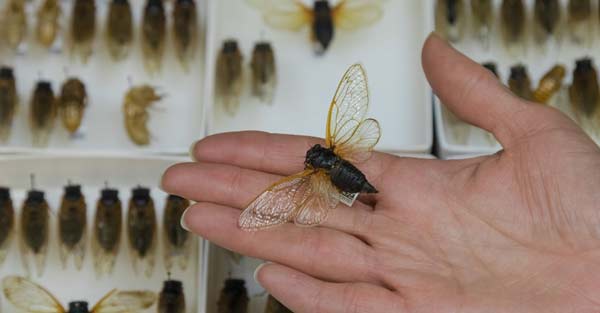National News
Cicadas Set to Emerge for First Time in 17 Years

By TOM VENESKY
www.citizensvoice.com
When it comes to lifespan, cicadas are the Methuselah of the insect world.
Similar to the biblical patriarch that lived for 969 years, cicadas are one of the longest-living insects on earth with a life cycle of 17 years.
Compared to the lifespans of the mayfly (24 hours), adult mosquito (two weeks) or common housefly (28 days), cicadas are true old-timers.
While much of their existence is spent underground, one of the six species of periodical cicadas that are found in Pennsylvania — Brood X — will be surfacing this spring across 23 counties, including Luzerne.
The emergence will conclude a lifespan that began in 2004, when the Brood X cicadas began their lives as nymphs, hatching from eggs deposited under the bark of trees and dropping to the ground where they enter the soil, not to see the light of day for 17 years.
Michael Skvarla, an assistant research professor with Penn State’s Department of Entomology, said Brood X is one the largest periodical brood in terms of geographic extent. They will emerge in southeastern Pennsylvania, New Jersey, Maryland, northern Virginia, Delaware, Ohio, Indiana, eastern Illinois, Tennessee, and even a few counties in northern Georgia.
While cicadas are easy to spot due to their bulky build and reddish eyes, not to mention a monotone chorus produced by males, they may not be noticeable everywhere in Luzerne County.
“Local emergence may be patchy with some areas experiencing heavier emergence than others. Periodical cicadas are affected by land disturbances such as urbanization and agriculture,” Skvarla said, adding areas that are predominantly wooded typically experience larger numbers of the insect.
In some states, changes in land use have greatly diminished cicada numbers. Skvarla cited Indiana as an example, where Brood X was historically recorded across the entire state but have now disappeared from the northern range where agriculture has replaced forest.
In those places where large numbers of cicadas will appear, Skvarla added it’s a chance for residents to witness one of the great phenomena of nature.
“It’s just an incredible sight to see so many insects in one place and be overwhelmed by the sheer amount of noise they can make,” he said. “The reason they mass emerge is to avoid predation — there are only so many birds and small mammals and they quickly eat their fill, so the remaining cicadas can mate without being eaten.”
With so many cicadas emerging at once, it means there will be a lot of hungry insects on the landscape as well. But hunger isn’t necessarily the cause of any damage from cicadas. Instead, the insects can damage trees when they lay their eggs in the tips of branches by cutting a small slit in the twig.
Skvarla said recently transplanted landscape trees are particularly susceptible to damage because of their smaller size, and he advised homeowners to avoid planting new trees during a cicada emergence year. If that’s not possible, he added, trees can be protected with mesh netting.
Still, the potential damage caused by cicadas is minimal compared to the impact of other pests, such as gypsy moths.
Vincent Cotrone, an urban forester with Penn State Extension in Luzerne County, said the damage from cicadas on landscape and forest trees will be negligible.
“They’re more of a nuisance than anything,” he said. “I see more damage on twigs from squirrels pruning them than any damage caused by cicadas.”
Skvarla agreed that healthy plants and trees are usually able to endure any impact from cicadas, including fruit trees and landscape varieties grown by nursery businesses.
If anything, the cicada emergence is a benefit to wildlife as many species — including fish, mammals and birds — feast on the abundant food source.
“Cicadas are terrible flyers and they’re easy to catch, so everything from small mammals to birds are going to enjoy an easy, high-protein food source this year,” Cotrone said. “They’re an easy eat for wildlife.”
The cicada emergence is a detailed process triggered by warming soil temperatures – 64 degrees is optimum — and it usually occurs in mid-May. Ten days following emergence, mating takes place, and adults live up to four weeks above ground before their 17-year lifespan comes to an end.
But Brood X will persist as the eggs laid by this year’s emergence will hatch this summer, and the nymphs will drop from the trees and enter the soil, not to be for another 17 years.
After that, it will be a while before Pennsylvania sees cicadas again. The next emergence will be Brood XIV, and that’s not expected to happen until 2025.

